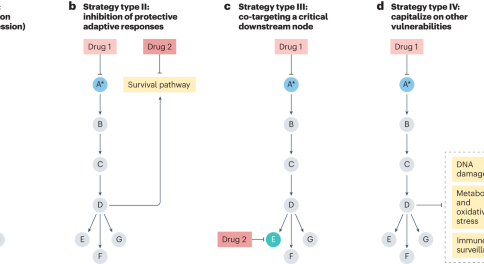
Black voices in cancer research and oncology
Kilan C. Ashad-Bishop, Onyinye D. Balogun, Runcie C.W. Chidebe, Leah M. Cook & Christina Towers

Kilan C. Ashad-Bishop, Onyinye D. Balogun, Runcie C.W. Chidebe, Leah M. Cook & Christina Towers

In this Review, Cichowski and colleagues provide an overview of combinatorial strategies designed to treat RAS-driven cancers that are based on four concepts that include vertical pathway inhibition, co-targeting RAS and adaptive survival pathways, co-targeting downstream or converging pathways and capitalizing on other cancer-associated vulnerabilities.
